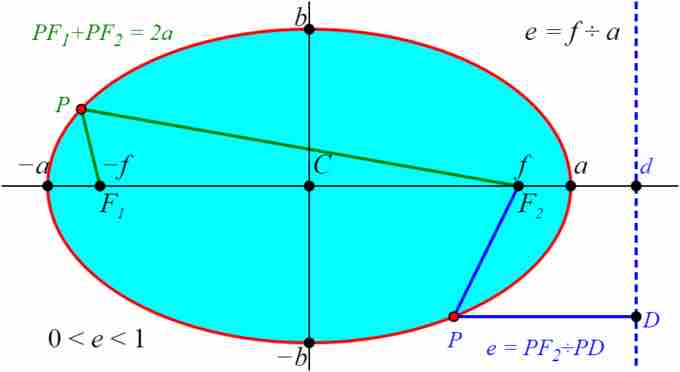Equation of an Ellipse
An ellipse is a conic section, formed by the intersection of a plane with a right circular cone. The standard form for the equation of the ellipse is:
if the ellipse is oriented horizontally, and:
if the ellipse is oriented vertically. We will use the horizontal case to demonstrate how to determine the properties of an ellipse from its equation, so that

Diagram of an ellipse
This diagram of a horizontal ellipse shows the ellipse itself in red, the center
Parts of an Ellipse
Center
The center of the ellipse has coordinates
Major Axis
The major axis of the ellipse is the longest width across it. For a horizontal ellipse, that axis is parallel to the
Minor Axis
The minor axis of the ellipse is the shortest width across it. For a horizontal ellipse, it is parallel to the
Foci
The foci are two points inside the ellipse that characterize its shape and curvature. For a horizontal ellipse, the foci have coordinates
Eccentricity
All conic sections have an eccentricity value, denoted
The eccentricity is defined as:
or, equivalently:
The orbits of the planets and their moons are ellipses with very low eccentricities, which is to say they are nearly circular. The orbits of comets around the sun can be much more eccentric. For comets and planets, the sun is located at one focus of their elliptical orbits.